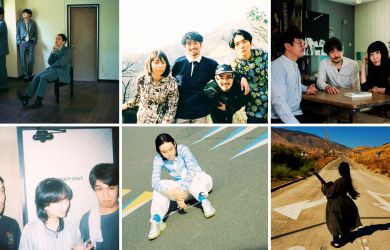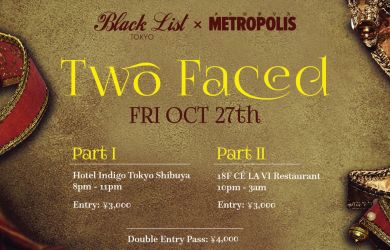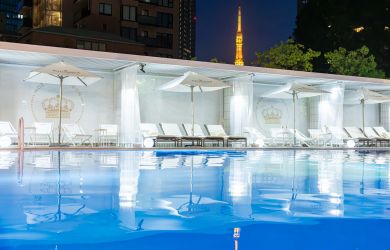
Originally published on metropolis.co.jp on March 2012

Saitama is commonly defined as being “next to Tokyo.” Most people know about Omiya, the rail hub that links Tohoku with everything else, and Urawa, the capital city and home to uber-popular soccer team Urawa Reds. Being at the center of transit has provided a safe haven for some original restaurants to carry on uninterrupted—boom or bust. And with prices generally cheaper due to lower rent and taxes, these venerable institutions won’t put a big dining dent in your wallet. Here are three classics and two newcomers around these two hubs.
Izumiya (izakaya)

Omiya stn, east exit
Here’s a godless place. Izumiya stands head and shoulders above the other questionable drinking holes due to its sheer authenticity—cool drinks, older salarymen and prices frozen from before the Bubble. The average age of the clientele is below 70 and over 60, although the green-aproned staff isn’t so spritely. Here they pour the endangered umewari from unlabeled bottles: a mahogany beverage served overfull in a thick glass and saucer (¥220). Made from plums, sunlight and alcohol, without sugar, it’s hard to put a finger on just what umewari tastes like—relatives would include cognac, cherry candy, and iced tea from the American South. Nigorizake (¥240) is also in abundance, and the unconventional standard of bottled Sapporo Lager (¥360) is provided over the more usual nama.
You’ll quickly realize a lot of people are eating full meals, and with good reason, as the selection, presentation, and prices are from the same generation as the staff. Nothing is expensive or perfunctory; you can order a full meal throwing three darts at the menu without breaking ¥1,000. I don’t know how long you could wax poetic about ham katsu (¥300), though it is pretty good. Enjoy their motsu nabe (¥170), as satisfying as its list of ingredients is horrifying—intestines and konnyaku (solidified devil’s-tongue jelly) mixed with spicy goodness. I’d serve it to my mother under a different name. Don’t smile, and be ready to share your table. Two locations, though one of them gets the nod for being easier to evacuate in a fire.
Hakushaku Tei (restaurant)
[Pictured above]
Omiya stn, east exit
This 24-hour spot is probably the best place to sober up in Omiya. The master behind this Okinawan/“European”/Chinese dining and coffee establishment has seen it all, but that’s not to say that the maroon upholstery is weather-beaten. Lean your head back to enjoy the crown molding and “stained-glass” ceilings; it goes well with the statues, lampshades, snake wine, fresh fruit, and canned meat. This place is at once instantly recognizable as both a Showa-era kissaten and the proud domain of Ryukyuan hospitality.
Hakushaku Tei’s food reflects the character and warmth of the interior in a big way—coffee sets with tin paraphernalia (¥400); sandwiches on thick wooden trays with nested bowls for soup and salad (from ¥580); and mains that approach overwhelming for a single diner (¥1,100). Standouts on the menu include the generous portions of the double-breast chicken filets (Milano-fu is my preference), Okinawan katsu sandwich (¥700), and the most orchestrated parfaits I’ve ever seen (from 630). There’s a pound of flavor in them, but the star of the show is the “fluted apple feather.” Avoid confusing this spot with the nearby soapland of the same name.
Burcak (bistro)

Musashi Urawa stn, west exit
The name of this smash-hit bistro is Czech in origin, and refers to the light, cloudy young wine that hits the streets of Prague just before the official wine harvest, looking like fresh orange juice and enjoyed just as easily. The name was chosen wisely. Everything here is fresh and colorful and tastes of quality, as it should—I saw five people involved in the kitchen, and each one of them knew just what they were doing. The well-tended wine selection (from ¥500/glass) is complemented by smart offerings that stand on their own but integrate well: homemade charcuterie specials (¥1,280), pâté that’s physically heavy (¥680), fresh pizzas (¥900), and enormous salads appropriately introduce the mains. Their bone-in pork roast (¥1,600) is locally sourced. I won’t tell you how they marry the voluminous “lamb burger” to the foie gras (¥1,500), but I’m happy to have known such a meal.
The gents across from me loudly enjoyed their pasta and obscene sausage plates (¥980). We saved room for coffee and dessert (¥600). Kudos to the owners, who took the time to launch this love letter to casual bistros all across the world. Stop in next month to celebrate Burcak’s one-year birthday.
Osuzu Shokudo (restaurant)

Urawa stn, north exit
Allow me to introduce what may be Metropolis’ least anticipated review. Osuzu is a single room where a family has made their life’s work of taking care of Urawa’s taxi drivers, laborers and technicians through the Japanese equivalent of “blue-plate specials.” Priced at ¥580 and ¥620, the respective A and B lunches are available throughout the day, and join a pork or chicken dish with roasted, sliced eggplant and ginger, small mountains of potato salad, painted and roasted fish, and of course, rice and miso soup. A small plate of tsukemono (pickles) will make an appearance at some point as well.
An aside that’s somewhat telling—some time ago, at their old location, Osuzu was featured in a major Tokyo paper’s “My Favorite Restaurants” column, and its patronage quickly tripled. The owners were not pleased, as it disturbed their regular customers, or jouren san. I have been eating here for over two years, and with some trepidation they agreed to let me take pictures and write about them—so long as only nice people come and, “It doesn’t get too crowded.” If you do come to Osuzu: play nice. It’s my good name on the line.

Junk Garage (ramen)
Kita Urawa stn, west exit
Junk Garage is the famous house of mazesoba, a soupless ramen of garlic, pepper, cheese, spicy mayo, and other delicious offenders. It’s ridiculous, and on the bite-to-bite scale few meals are more flavorful. Like many of Saitama’s residents, Junk Garage’s owners moved north to start a family—literally as much as in shop terms. They have since expanded from the “original” Higashi Omiya venue into Koshigaya Lake Town, Nishi Funabashi, and Kita Urawa.
The interiors vary slightly on the theme of hard rock and grime, although only the Higashi Omiya location regularly sports scooter gangs in the parking lot—a definite plus. All offer the same solid menu; an excellent and balanced tonkotsu ramen (¥700) with as much yasai as you like to raise the vitamin factor, and the aforementioned mazesoba powerhouse (¥750)—currently available with a natto topping for good measure.
The pronounced flavor of Junk Garage’s cuisine is, in fact, very approachable, and unlike its well-known contemporary, the Ramen Jiro chain, Junk’s staff aren’t completely unpleasant to their customers. There are only things to be enjoyed here.





